|
If you have competed in a 24-hour race, you have likely already identified some of the key roles you should consider when building or developing a team. There is no correct way to manage the question of roles. Some teams like to identify specific tasks that individual racers take responsibility for. Others have multiple people that all can and do serve in each role at any given time. Here are examples of some roles and responsibilities that can help you have a more successful first expedition race. CaptainMany teams identify a team captain, and this role can be the hardest to define. Some teams believe a captain manages the overall strategy but shouldn’t navigate. Some believe the captain should play a primary role in keeping the team engaged, managing the team’s highs and lows. For some teams, the captain is purely a symbolic designation: they are the person who signs papers and goes to the pre-race briefings. Ultimately, captains are leaders, and there are so many ways to lead, especially in an expedition race. The key here is to clearly define as a team what this role should entail, and it is crucial to sort this out before race week. It can be difficult if the team “captain” is soft-spoken, easygoing, and relaxed for eight months leading up to the event but then turns into a drill sergeant in the woods. NavigatorThere are two primary approaches to navigation in a multi-day race. Neither one is right. Again, clear expectations ahead of time are crucial.
MuleTraditionally, you will hear many adventure racers talking about a team mule (or two). These racers tend to be physically stronger and are generally responsible for carrying extra gear, shouldering a pack when someone might benefit from a break, or towing a teammate who needs some extra power. Be aware that some “mules” tend to overdo it, and regardless of how strong they are, they will have a low moment or three over the course of a multi-day race. Sleep deprivation, elevation change, weather, and nutrition, not to mention injury, can all impact a mule’s ability to haul that extra gear. You need to keep the big picture in mind and make sure that the team keeps day four in perspective on day one when the mule is thinking about carrying three packs and three bikes while towing the whole team and chopping away thick underbrush with a machete to make up ten minutes of time. Ideally, you are open to everyone on the team muling at some point. It’s a long race, and the best teams (not necessarily the winning teams, but the most experienced, the best racers) know that everyone will shoulder a heavy load at some point in a multi-day race. MechanicIdeally, have someone who will take lead with bike mechanicals. Many teams have one or two people who naturally enjoy tinkering with bikes and can fill this role. If you don’t, think about having someone take some basic bike maintenance and trail repair classes at a local bike shop or REI. Odds are good that you will need to deal with a flat tire, a broken chain, or a malfunctioning brake. Whether it’s the bike mechanic or someone else, make sure you also have some added bike repair tools and parts so they can do their job. MedicWe believe that safety is of the utmost importance at Rootstock Racing, and while many races don’t require any medical training, every racer should recognize that they are thinking about signing up for a race that will have them in wilderness settings for days on end, often with no easy access, and they will be sleep deprived. Things happen, and being able to respond to and stabilize a situation is crucial. While we are requiring a WFA (Wilderness First Aid) certification for at least one team member at the Endless Mountains, WFR (Wilderness First Responder) is even better. Anyone spending significant time in the outdoors should consider such a certification. Logistics PlannerWho has an eye for detail? Who are the strongest organizers? Who likes to make spreadsheets with food and gear schedules for each stage of the race? It helps to identify one or two people who can work to assist the team in planning for the race and stay on task in TAs. Of course, sometimes your “logistics planner” is a zombie and can’t stay awake, but ideally someone should coordinate the team to manage TAs efficiently and make sure that the team is carrying the gear and nutrition needed for a given portion of the race. MotivatorYou will struggle. Sometimes one person will be in a dark place. Sometimes the whole team may be. It helps to have some folks ready to lift the team in those moments - to get them going, keep them going, or boost morale. Songs, stories, riddles, games. This is a tough one as every team and every racer will respond to different efforts. Talk about individual preferences ahead of time. As with the captain's role above, it is useful for the motivator to know what helps each individual team member - or better yet, for everyone on the team to know what helps the other members brighten up! BoatmasterWe've never actually heard or used this term, but it sounds good. So, we will go with it. Expedition races tend to incorporate more challenging paddling. Often times it’s harder, simply due to the sheer length of the stages. But you may encounter more white water, nighttime paddling, or, in some races, ocean paddling. Ideally, you will have one or two teammates more comfortable handling boats, team members who can handle the stern or pick lines through a river. Make sure you read the race website carefully and confirm what paddling skills will be useful for the event. If you don’t have those skills, make sure at least a couple of teammates invest the time into training and learning proper paddling skills and safety standards for the conditions. And recognize that taking and passing a skills certification is not the same as consistent practice on the water. You can know the theory behind open-water paddling, but being out in five foot swells and dealing with a capsized boat offshore on day three is very different than practicing in calm conditions with an instructor. Make sure at least a couple of people know what they are doing. There are more nuanced and specific questions you might consider -- whose job is it to pick lines on a technical trail? Who brings up the rear? Who is best at route finding through a dense bushwhack? Who watches the clock to facilitate consistent eating and drinking? Who carries the passport or electronic dipper? But what we've outlined above tend to be the eight primary roles distributed across a team of, at most, four people.
What does that mean? This is what so many of us adore about AR: it’s a team sport. You have to work together. You don’t necessarily have to do ALL of these things individually, but you need to be able to do multiple things well enough to benefit the team, and you need to be ready to step in and adopt someone else’s role when they no longer can handle it. Chances are good, in a multi-day race, that you will have a turn.
0 Comments
For most new expedition race participants, some of the biggest questions - and perhaps fears - arises when contemplating preparation. What does it take to prepare for FIVE days of non-stop racing?! In this article, we are not going to provide a training plan because such plans are so individualized. Instead, we want to share some thoughts and ideas on how to get started. Once you have processed some of these insights and tips, we urge you to talk to other racers who have experience in training for multi-day events. Feel free to reach out with questions and keep an eye out for follow-up discussions regarding this topic and others in our “New To Expedition Racing” series, to be hosted on Facebook Live! First, a few things to keep in mind before filling in the training calendar that might help relieve some of the stress. Remember, we have all been where you are before: new to multi-day races, wide eyed over the momentous, unimaginable race you have signed up for, and wondering where to start. One of the most incredible things about AR is that it teaches us that we are capable of so much more than we can imagine, and much of the challenge is mental. This begins with our training. General Reflections
Training ApproachesAs for the actual training, there are a few primary ways to approach this. There is no right way to prepare for a multi-day race, and much of it will come down to your personal preference, your other commitments, and of course how much you want to invest in your preparation. Option One: Active-Lifestyle Training This first approach might be referred to as “active lifestyle training.” Such athletes tend to have busy lives and either have a hard time completing structured training or don’t enjoy it. As long as you are truly active, this might work for you. Such athletes regularly do some of if not all the following and find it’s enough to get through an event like this:
Keep in mind that you will likely be at a disadvantage to racers targeting training more unless you are naturally blessed with incredible endurance - but then again, you might be more mentally fresh when you get to the start line. This approach can work, particularly for those looking to simply experience the event. You will likely suffer more physically without more targeted training, but if your goal is simply to have an amazing adventure with your friends, completing a major event like this may still be attainable, albeit almost assuredly a short-course version of it. That said, you should be comfortable and competent with the skills required for the event and potentially ready for more mental challenges as your body won’t be as prepared for the physical strain of the journey. Teams that can persevere with less targeted physical training tend to have strong skills and a considerable amount of experience out in the wilderness and elements. They are strong navigators who are efficient with route choice, they are technically sound bikers, they are skilled paddlers, and they have strong, cohesive team dynamics that allow them to work through the event efficiently, sometimes even more effectively than some top teams. Without a strong base in the skills, the lack of physical preparation may be too much to overcome. Option Two: Structured Training
Many expedition racers try to get in at least one long ride and one long run per week as they prepare for a multi-day race. Defining what constitutes “long” is difficult, and new racers should be aware that too much too soon can impede your training, lead to overuse injuries, and potentially end your race before you even hit the start line. Build slowly and recognize that you don’t need to ride a century or run a marathon every weekend to be prepared. As noted above, a long weekend hike with a twenty-pound pack might be just as valuable, and maybe more so, than a three-hour run pounding pavement. A three hour mountain bike ride might only net you thirty miles, but it might help build more strength and help you develop your bike skills better than a road ride on a bike you won’t be using in the event anyway. Anything counts, but many racers find a balance between long hours and shorter ones with more intensity. Sometimes less is more. Overall, mix it up. It’s one of the joys of the sport and training for it. One week, you might run 3-4 times with a couple of other sessions on the bike and in a boat. The next week, you might focus on biking. Again, whatever fits your schedule, but if you can shoot for ten hours a week - give or take - maybe not right away but by the late spring, you will be more fully preparing your body for the challenges it will face over five days of racing. Option Three: The Coached Athlete Most racers don’t work with a coach, but there are major benefits from doing so. Yes, it costs more money, but professional coaching will almost assuredly prepare you better for the event, it will translate to better performance and subsequently less physical and mental struggle, and it will increase your chances to reach the finish line. It’s not a magic pill, and the race will still be very challenging, but almost everyone who works with a coach reports being better prepared and able to enjoy the race more thanks to that preparation. Additionally, coaches remove some of the mental strain for racers who may have trouble conceiving of a training plan. It can take a considerable amount of time and energy to plan effectively training week in and week out, and many new racers just don’t know where to start. A coach removes this worry and does that work for you, providing you added accountability. You are also working with an expert who understands nuance in training and preparation most of us never fully learn. For the Endless Mountains, we are excited to offer a special coaching opportunity. Experienced adventure racer and longtime endurance coach Jen Segger is offering a team package to teams competing in Pennsylvania in June. It’s a great way to start your journey and more affordable as she will offer a training program to the whole team. final thoughtsIn no particular order, consider the following suggestions and try to work them into your training plan:
Still on the fence? Wondering whether you have what it takes to tackle everything that a multi-day race entails? Let’s take a look at what you can expect from an expedition race. Like all adventure races, different race directors bring their own distinct flavors to expedition racing, so do some homework first. Study the event’s website. Read race reports. Most importantly, ask people who have participated in events directed by the race directors about their experiences. Public record isn’t always the full story, so this final step is important. If you are going to invest heavily in an expedition race, it’s worth knowing what the race director’s reputation is and whether their style suits your team. There is a race out there for everyone, and with a race as substantial as an expedition, it’s worth taking your time to learn about the RDs first. Despite the differences you’ll find across events, there are some basic components that you will likely encounter at any multi-day race. Below we lay out these common considerations, as well as some general notes about what you can expect at the Endless Mountains formatsLinear. Unlike many shorter events, expedition races are traditional linear in nature. In their “purest” form, this means that racers must complete the entire course as designed, visiting every checkpoint, to officially finish the race. Traditionally, RDs designing such events plan to leave the course open for much longer than the time it takes the winning team to cross the line to allow less experienced and slower teams a fair to chance to finish the course. These races tend to balloon and may last for seven to ten days, even if the winners finish in four or five. In linear events, since teams must complete the entire course, rankings are simply based on time. 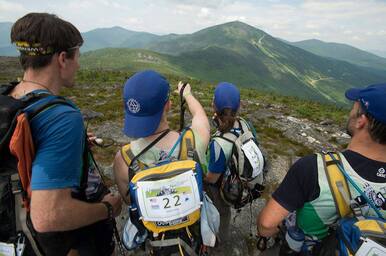 Linear + Short Course. Increasingly, RDs offer races that are shorter in duration, even as the courses remain similar in distance. They know that fewer teams will have the time to complete the entire route, so they design short courses that allow slower or less experienced teams an option to complete a modified course and still finish the race officially. These courses are still designed so that teams must visit checkpoints in a prescribed order. In such events, time cutoffs are used to funnel teams onto shorter stages or alternate stages of the course as necessary. Typically, these races are ranked in tiers and by time: teams completing the full course, and then teams based on which cutoffs they miss. Rogaine and Modified Rogaine. In expedition racing, courses are generally linear in nature, but some RDs incorporate a rogaine approach rather than short coursing teams. A rogaine is a type of long-form orienteering event. In a rogaine, teams are allowed to visit checkpoints in whatever order they choose. This allows racers to pick and choose what they do rather than following a more prescribed course. While less common in expedition races, some events allow teams more flexibility to “choose their own adventure.” These events tend to be better for many less experienced teams as linear courses can be too much and short course options are often less enjoyable. Rogaines allow teams to strategize more to maximize their experience and play to their strength. In such events, teams are ranked first by the number of checkpoints they visit and then by time. Endless Mountains 2023: We will be using a combination of both approaches. The race will be designed in a linear format with one or two time cutoffs. However, certain sections will also incorporate a rogaine or modified-rogaine approach, offering less experienced teams more opportunity to pick and choose what they do. BikingExpect big miles in expedition races. While plenty of races have incredible trail riding, biking is often a means to connect the course together and cover distance. You can expect some pavement, though most RDs tend to seek out more interesting routes using a combination of trails, dirt and gravel roads, jeep tracks, and other routes. While you may encounter technical sections, usually most of the riding in expedition racing is relatively easy in terms of technicality. That said, depending on the region in which the race takes place, you can typically expect substantial elevation in most expedition races, if for no other reason than you will cover significant mileage and it will compound over the duration of the event. Additionally, whether because of the grade, surface, or the onset of fatigue, expect to do some hike-a-biking. Some RDs believe bike sections can include hours of hike-a-biking. Some consider bikewhacking its own discipline. In Expedition Alaska, we started a long, 24-hour bike leg… without our bikes. It took several hours of bushwhacking and trekking over a 4,000-foot range to find our bike boxes. Typically, you will encounter multiple bike stages in an expedition race. Sometimes the stages are divided relatively evenly, but it is not unusual to see one bigger stage, sometimes in the 75-100 miles range or bigger. Endless Mountains 2023: The riding in the 2023 course is diverse. Teams will find themselves on plenty of forest road and jeep track; some fun single track; and a bit of hike-a-biking and bikewhacking for good measure. Expect to encounter some route choice and trail navigation on the bike. trekking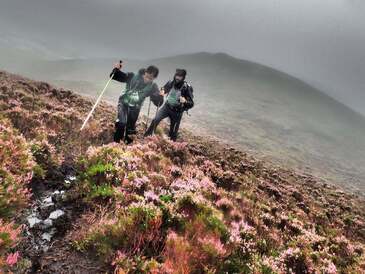 You can generally expect two to three substantial treks in an expedition race. As with biking, it’s not uncommon to have one bigger trek and then a few smaller ones, but sometimes you may be up against several 20-30-mile treks. Trekking in expedition racing varies widely; some RDs will keep racers largely on trails while others are quicker to send them overland. Sometimes this is RD style, sometimes it reflects permitting restrictions and land availability. Some races incorporate significant stretches on pavement, and others won’t touch it. Whatever the RD has in store for you, you can expect substantial time on your feet over the course of the event. Endless Mountains 2023: Trekking tends to be a featured discipline in Rootstock events, and the Endless Mountains is no different. You will see a mix of surfaces including some urban running, remote trails, and plenty of bushwhacking. Most of the foot sections will include more challenging navigation, though there will be options in places for less experienced teams to make strategic decisions if they are not comfortable with more advanced mapwork. You will two longer trekking sections in this year's race and a few additional shorter stages. paddlingPaddling tends to run the gamut: sea kayaking, whitewater rafting, packrafting, stillwater and whitewater canoeing, stand up paddleboarding… You name it, you will find it in the right expedition race. Mentally, paddling sectons can be more challenging than other stages after fatigue sets in, as they have a tendency to lull tired racers to sleep. They also tend to be, or feel, long. Most race directors are clear about what sort of boating you can expect. Make sure you have the skills required for such paddling.
navigationWhile expedition races are difficult races, they actually tend to be a bit easier than many shorter events when it comes to navigation. Route choice can be challenging, but typically checkpoints are on major features, and the challenge is in choosing the best route and then staying on it once fatigue sets in. Balancing maps with varying scales is an important skill, and expect maps with a bigger scale than normal, especially on biking and paddling stages when you might be covering large distances with relatively few checkpoints. Endless Mountains 2023: Parts of the Endless Mountains will fall in line with the norms of expedition racing. There will be fewer points than at a typical Rootstock event, they will be spread out, and on most sections the challenge will be in route planning and execution rather than micro-navigation. That said, we love navigation and strategy at Rootstock Racing. Some stages will involve more challenging mapwork, especially while on foot, and you may encounter a bit more strategy than some expedition races allow for. additional disciplines Many expedition races include unique “extra” challenges: swimming, rollerblading, caving, ropes work (rappelling, ascending, traversing, even lead climbing), mountaineering, coasteering, horseback riding, and more. Endless Mountains 2023: The 2023 Endless Mountains course will include a climbing section! Teams will encounter four routes ranging from 5.5 to 5.9. They should be proficient in both top-roping and belaying. Climbing shoes are not mandatory gear but will be helpful. Teams who are not able to successfully complete the climbing stage will be assessed a time penalty, to be served later on the course. coming up next...
|
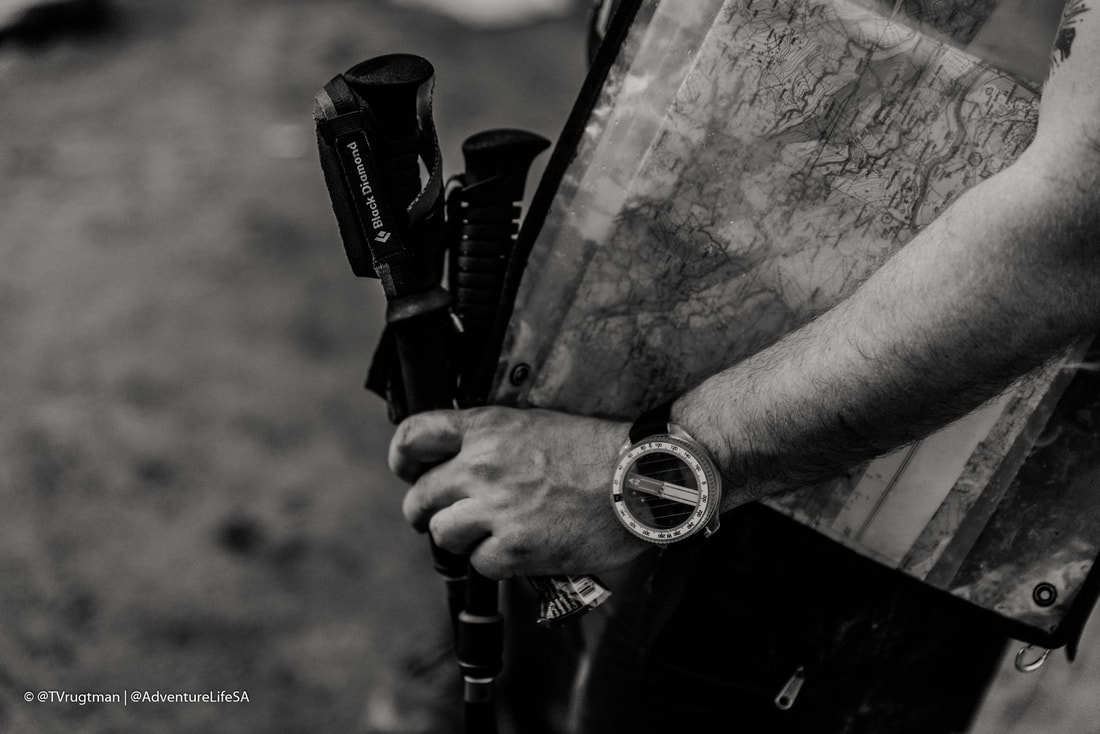
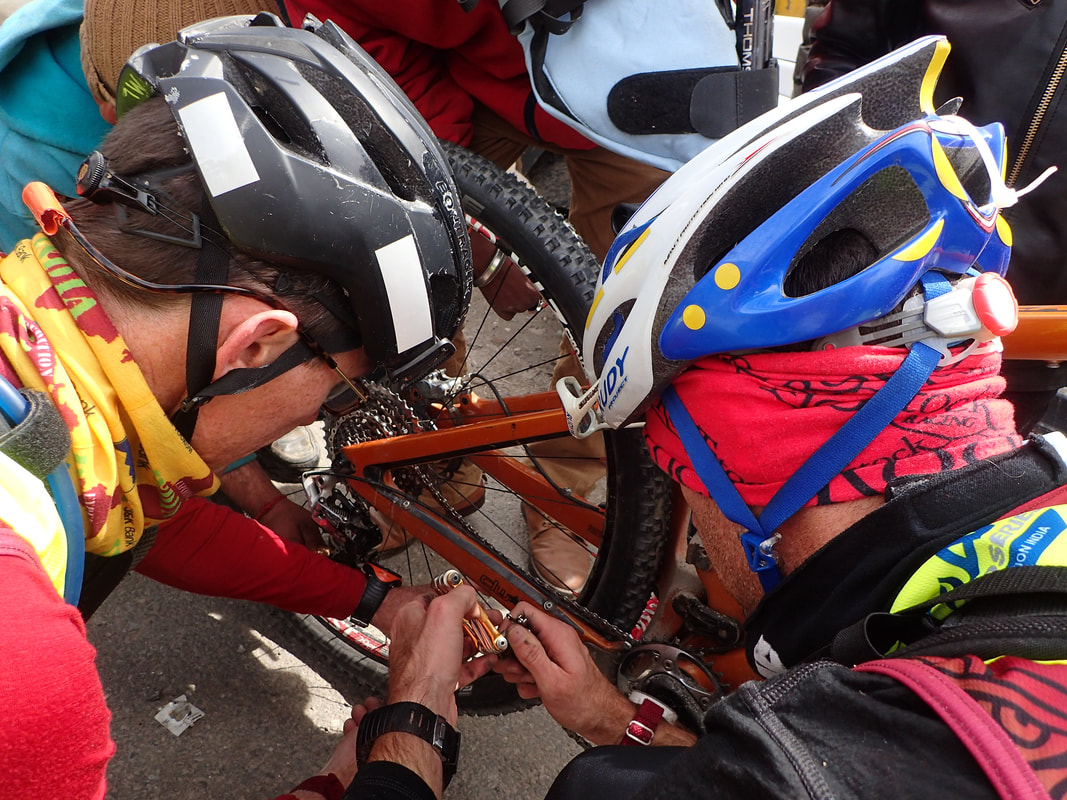
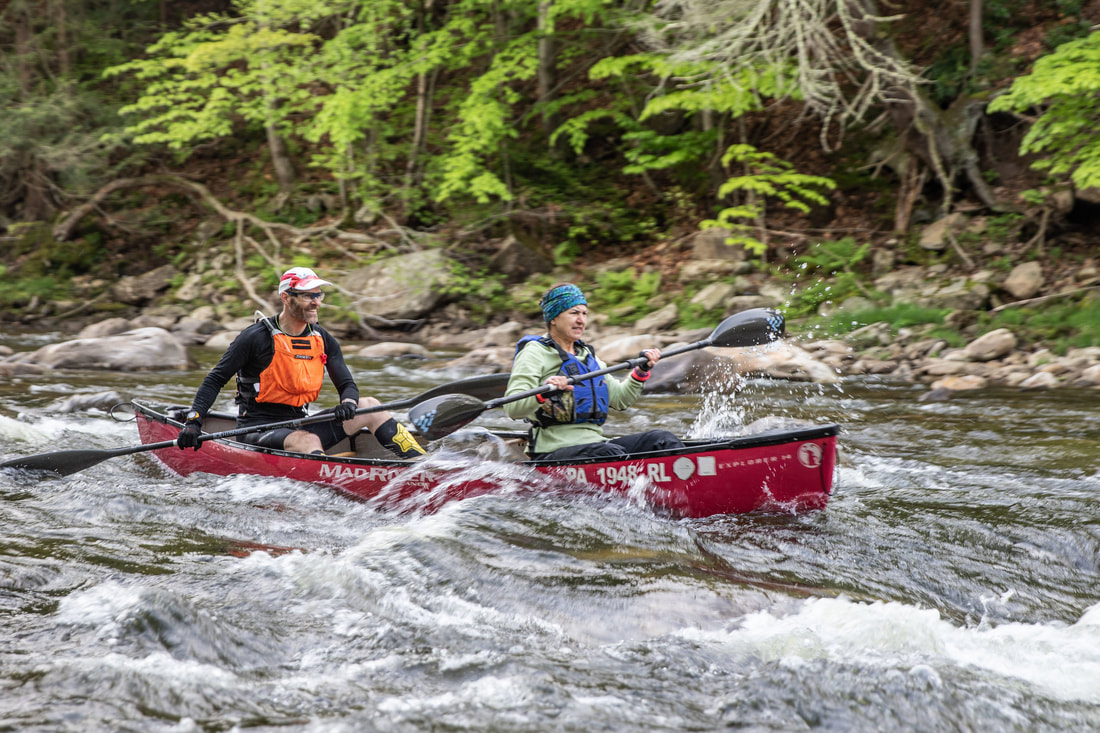

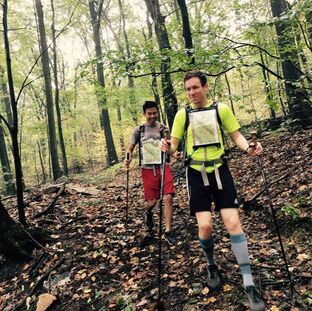
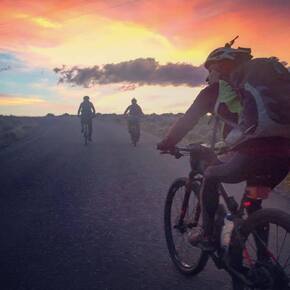
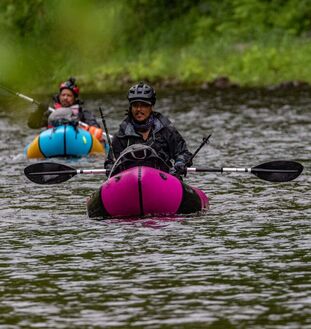
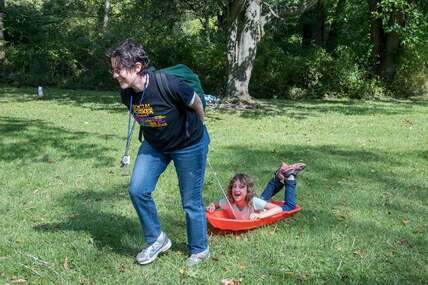
 RSS Feed
RSS Feed
